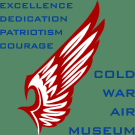As work on a restoration progresses, we may uncover problems that require special parts, additional work or special support people. Waiting on parts, scheduling special repairs and working around busy schedules with limited resources (and resources are always limited) requires a flexible attitude and quite a bit of composure.
Many of our projects are overlapped to avoid down time while we are waiting on parts for other projects. We also usually have a number of small work groups working simultaneously on different projects, either because of their interest or specialty. These different interest groups then join together and assist each other as needed.
 The Mi-2 work area has been reshuffled as we reversed the work order on these birds. While not as busy or dangerous as a carrier deck, even our aircraft movements require planning and care. Once an aircraft is up on jacks, it cannot be moved easily to make room for another aircraft to get by. We had that fun experience recently getting the Twin Commanche out when its annual was completed and it was needed for an important trip. And any aircraft movement in a crowded area always runs the risk of damage to an aircraft.
The Mi-2 work area has been reshuffled as we reversed the work order on these birds. While not as busy or dangerous as a carrier deck, even our aircraft movements require planning and care. Once an aircraft is up on jacks, it cannot be moved easily to make room for another aircraft to get by. We had that fun experience recently getting the Twin Commanche out when its annual was completed and it was needed for an important trip. And any aircraft movement in a crowded area always runs the risk of damage to an aircraft.In a previous post, we reported that repairs had been started on Mi2, Bord 214. When we removed the fuel bladder, we discovered that the damage was more extensive than we had anticipated. Removing the fuel bladders from the other Mi-2's gave us a better idea of all the repairs needed, as well as how many replacement bladders to order. The reshuffle moved 214 off the jacks and to the back, while 213 was moved up as the next primary Mi-2 project. Repairs to 214 will require metalwork as extensive, or possibly more so, than the repairs that were performed on Bord 211


A view inside #214 (and a closeup) after the fuel bladder was removed



No comments:
Post a Comment